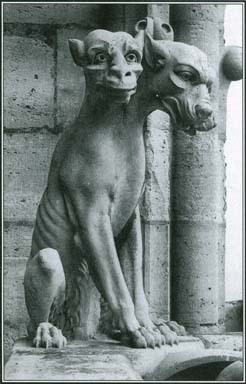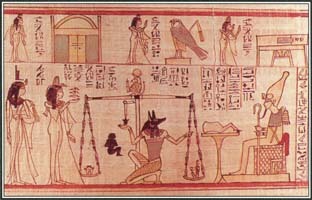THE SHEPHERD AND THE DAUGHTER OF THE SUN
from "The Incas of Peru" by Sir Clements Markham, London, Smith Elder & Co. 1910 pp. 408-415.
IN THE SNOW-CLAD CORDILLERA above the valley of Yucay, called Pitu-siray, a shepherd watched the flock of white llamas intended for the Inca to sacrifice to the Sun. He was a native of Laris, named Acoya-napa, a very well disposed and gentle youth. He strolled behind his flock, and presently began to play upon his flute very softly and sweetly, neither feeling anything of the amorous desires of youth, nor knowing anything of them.
He was carelessly playing his flute one day when two daughters of the Sun came to him. They could wander in all directions over the green meadows, and never failed to find one of their houses at night, where the guards and porters looked out that nothing came that could do them harm. Well! the two girls came to the place where the shepherd rested quite at his ease, and they asked him about his llamas.
The shepherd, who had not seen them until they spoke, was surprised, and fell on his knees, thinking that they were the embodiments of two out of the four crystalline fountains which were very famous in those parts. So he did not dare to answer them. They repeated their question about the flock, and told him not to be afraid, for they were children of the Sun, who was lord of all the land, and to give him confidence they took him by the arm. Then the shepherd stood up and kissed their hands. After talking together for some time the shepherd said that it was time for him to collect his flock, and asked their permission. The elder princess, named Chuqui-llantu, had been struck by the grace and good disposition of the shepherd. She asked him his name and of what place he was a native. He replied that his home was at Laris and that his name was Acoya-napa. While he was speaking Chuqui-llantu cast her eyes upon a plate of silver which the shepherd wore over his forehead, and which shone and glittered very prettily. Looking closer she saw on it two figures, very subtilely contrived, who were eating a heart. Chuqui-llantu asked the shepherd the name of that silver ornament, and he said it was called utusi. The princess returned it to the shepherd, and took leave of him, carrying well in her memory the name of the ornament and the figures, thinking with what delicacy they were drawn, almost seeming to her to be alive. She talked about it with her sister until they came to their palace. On entering, the doorkeepers looked to see if they brought with them anything that would do harm, because it was often found that women had brought with them, hidden in their clothes, such things as fillets and necklaces. After having looked well, the porters let them pass, and they found the women of the Sun cooking and preparing food. Chuqui-llantu said that she was very tired with her walk, and that she did not want any supper. All the rest supped with her sister, who thought that Acoya-napa was not one who could cause inquietude. But Chuqui-llantu was unable to rest owing to the great love she felt for the shepherd Acoya-napa, and she regretted that she had not shown him what was in her breast. But at last she went to sleep.
In the palace there were many richly furnished apartments in which the women of the Sun dwelt. These virgins were brought from all the four provinces which were subject to the Inca, namely Chincha-suyu, Cunti-suyu, Anti-suyu and Colla-suyu. Within, there were four fountains which flowed towards the four provinces, and in which the women bathed, each in the fountain of the province where she was born. They named the fountains in this way. That of Chincha-suyu was called Chuclla-puquio, that of Cunti-suyu was known as Ocoruro-puquio, Siclla-puquio was the fountain of Anti-suyu, and Llulucha-puquio of Colla-suyu. The most beautiful child of the Sun, Chuqui-llantu, was wrapped in profound sleep. She had a dream. She thought she saw a bird flying from one tree to another, and singing very softly and sweetly. After having sung for some time, the bird came down and regarded the princess, saying that she should feel no sorrow, for all would be well. The princess said that she mourned for something for which there could be no remedy. The singing bird replied that it would find a remedy, and asked the princess to tell her the cause of her sorrow. At last Chuqui-llantu told the bird of the great love she felt for the shepherd boy named Acoya-napa, who guarded the white flock. Her death seemed inevitable. She could have no cure but to go to him whom she so dearly loved, and if she did her father the Sun would order her to be killed. The answer of the singing bird, by name Checollo, was that she should arise and sit between the four fountains. There she was to sing what she had most in her memory. If the fountains repeated her words, she might then safely do what she wanted. Saying this the bird flew away, and the princess awoke. She was terrified. But she dressed very quickly and put herself between the four fountains. She began to repeat what she remembered to have seen of the two figures on the silver plate, singing:
"Micuc isutu cuyuc utusi cucim." Presently all the fountains began to sing the same verse.
Seeing that all the fountains were very favourable, the princess went to repose for a little while, for all night she had been conversing with the checollo in her dream.
When the shepherd boy went to his home he called to mind the great beauty of Chuqui-llantu. She had aroused his love, but he was saddened by the thought that it must be love without hope. He took up his flute and played such heart-breaking music that it made him shed many tears, and he lamented, saying: "Ay! ay! ay! for the unlucky and sorrowful shepherd, abandoned and without hope, now approaching the day of your death, for there can be no remedy and no hope." Saying this, he also went to sleep.
The shepherd's mother lived in Laris, and she knew, by her power of divination, the cause of the extreme grief into which her son was plunged, and that he must die unless she took order for providing a remedy. So she set out for the mountains, and arrived at the shepherd's hut at sunrise. She looked in and saw her son almost moribund, with his face covered with tears. She went in and awoke him. When he saw who it was he began to tell her the cause of his grief, and she did what she could to console him. She told him not to be downhearted, because she would find a remedy within a few days. Saying this she departed and, going among the rocks, she gathered certain herbs which are believed to be cures for grief. Having collected a great quantity she began to cook them, and the cooking was not finished before the two princesses appeared at the entrance of the hut. For Chuqui-llantu, when she was rested, had set out with her sister for a walk on the green slopes of the mountains, taking the direction of the hut. Her tender heart prevented her from going in any other direction. When they arrived they were tired, and sat down by the entrance. Seeing an old dame inside they saluted her, and asked her if she could give them anything to eat. The mother went down on her knees and said she had nothing but a dish of herbs. She brought it to them, and they began to eat with excellent appetites. Chuqui-llantu then walked round the hut without finding what she sought, for the shepherd's mother had made Acoya-napa lie down inside the hut, under a cloak. So the princess thought that he had gone after his flock. Then she saw the cloak and told the mother that it was a very pretty cloak, asking where it came from. The old woman told her that it was a cloak which, in ancient times, belonged to a woman beloved by Pachacamac, a deity very celebrated in the valleys on the coast. She said it had come to her by inheritance; but the princess, with many endearments, begged for it until at last the mother consented. When Chuqui-llantu took it into her hands she liked it better than before and, after staying a short time longer in the hut, she took leave of the old woman, and walked along the meadows looking about in hopes of seeing him whom she longed for.
We do not treat further of the sister, as she now drops out of the story, but only of Chuqui-llantu. She was very sad and pensive when she could see no signs of her beloved shepherd on her way back to the palace. She was in great sorrow at not having seen him, and when, as was usual, the guards looked at what she brought, they saw nothing but the cloak. A splendid supper was provided, and when every one went to bed the princess took the cloak and placed it at her bedside. As soon as she was alone she began to weep, thinking of the shepherd. She fell asleep at last, but it was not long before the cloak was changed into the being it had been before. It began to call Chuqui-llantu by her own name. She was terribly frightened, got out of bed, and beheld the shepherd on his knees before her, shedding many tears. She was satisfied on seeing him, and inquired how he had got inside the palace. He replied that the cloak which she carried had arranged about that. then Chuqui-llantu embraced him, and put her finely worked lipi mantles on him, and they slept together. When they wanted to get up in the morning, the shepherd again became the cloak. As soon as the sun rose, the princess left the palace of her father with the cloak, and when she reached a ravine in the mountains, she found herself again with her beloved shepherd, who had been changed into himself. But one of the guards had followed them, and when he saw what had happened he gave the alarm with loud shouts. The lovers fled into the mountains which are near the town of Calca. Being tired after a long journey, they climbed to the top of a rock and went to sleep. They heard a great noise in their sleep, so they arose. The princess took one shoe in her hand and kept the other on her foot. Then looking towards the town of Calca both were turned into stone. To this day the two statues may be seen between Calca and Huayllapampa




